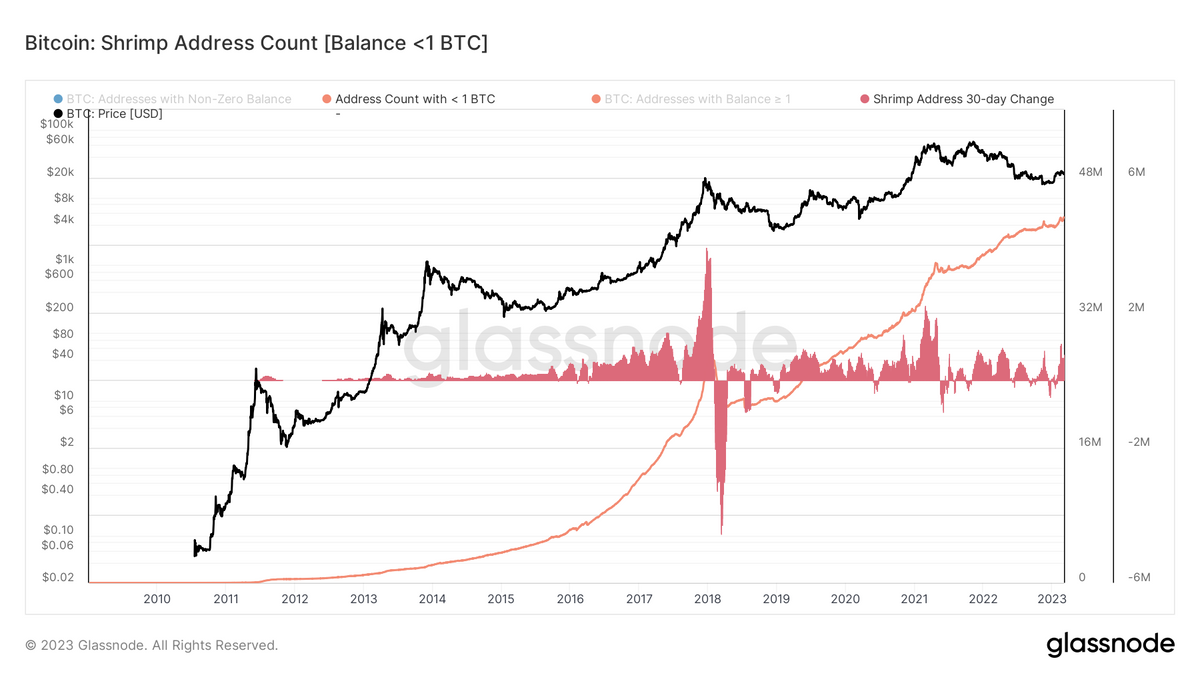How does a bitcoin ETF work? Five key components of pre-packaged bitcoin
This post is the second part of a series and looks at the steps involved when an investor buys exposure to bitcoin through the newly launched exchange traded funds.

The approval of the bitcoin exchange traded funds (ETFs) is big news. The moment, a longtime in the making, will go down as a major inflection point for Bitcoin and the rest of the crypto market.
After all, the approval of an ETF brings with it the promise of liquidity and legitimacy. But, it also comes at a cost.
This is the second post in a series of three. Check out the first post for more background and context here:

This post will focus more on how the bitcoin ETF will actually work, which helps to illustrate some of the potential opportunities and potential risks of this new way of getting exposure to bitcoin.
As a starting point, here’s how BlackRock, one of the largest investment fund managers on the planet, explained why they were seeking approval for a bitcoin ETF in their S1 filing with the Security and Exchange Commission (SEC).
The Shares are intended to constitute a simple means of making an investment similar to an investment in bitcoin rather than by acquiring, holding and trading bitcoin directly on a peer-to-peer or other basis or via a digital asset exchange. The Shares have been designed to remove the obstacles represented by the complexities and operational burdens involved in a direct investment in bitcoin, while at the same time having an intrinsic value that reflects, at any given time, the investment exposure to the bitcoin owned by the Trust at such time, less the Trust’s expenses and liabilities. Although the Shares are not the exact equivalent of a direct investment in bitcoin, they provide investors with an alternative method of achieving investment exposure to bitcoin through the securities market, which may be more familiar to them.
Source: bit20231215_s1a.htm
The basic idea driving the creation of a bitcoin ETFs — 11 were approved initially by the SEC on January 10, but there are more on the way — is that it will be easier for traditional investors to gain access to bitcoin through their existing channels and brokerages.
The goal is to make it easier for people to buy and hold exposure to bitcoin without actually having to own bitcoin by removing the “complexities and operational burdens involved in a direct investment in bitcoin.”
In a way, the process might be easy for the end user — now exposure can be purchased through an insured brokerage account with one click, but as we’ll see that the process introduces a lot of parties to the transaction. In other words, a bitcoin ETF makes BTC easy but not simple.
If you remember, the goal of the bitcoin was to make sending digital currency over the internet simple (in a peer-to-peer way), but it was never easy.
So there’s a big juxtaposition happening here, which will take some time to unfold, but which will likely have implications for the future growth of the crypto market more broadly.
How a bitcoin ETF works in five steps
It’s important to note that the steps below apply to a spot bitcoin ETF, which is the most basic kind of bitcoin ETFs. The idea behind a spot ETF is that the fund mirrors or tracks the price of bitcoin as close as possible. Other kinds of bitcoin ETFs (such as bitcoin futures ETF) a a bit more complex.
So some of the basic components of a bitcoin ETF include:
A fund manager
The first step in creating a bitcoin ETF is having a fund manager. These are the firms all competing right now to offer bitcoin ETFs, win SEC approval, and get their ETFs listed on brokerages.
ETF manages work with market makers and custodians and manage the process of creating and executing the ETF so that the ETF shares they manage have prices that closely match the constantly moving bitcoin price.
ETF managers can decide what kinds of fees to charge for their management services and they’ll make decisions on what kinds of market makers and custodians (more on these belowO will be the most efficient and best fit for their clients.
A brokerage
One of the main features of a bitcoin ETF is that people can buy exposure to BTC through common stock brokerage firms. Immediately, this boosts bitcoin’s total addressable market in terms of potential customers and potential investable dollars (and this is the part that has a lot of people excited).
The upside here is that for people and institutions who already have existing brokerage accounts and relationships, then gaining access to bitcoin’s price movements. So the main advantage is simplicity and ease of use.
Rather than having to set up a bitcoin wallet and find a trusted crypto exchange, and learn about managing private keys, bitcoin ETF investors instead get easy access to the price movements of bitcoin.
The downside to this arrangement is that it’s counter to why bitcoin was created in the first place. Bitcoin was created to remove the need for intermediaries or trusted third parties. For the first time, bitcoin allows people to self-custody purely digital assets outside of any kind of traditional channel.
So an ETF brings a lot of convenience, but it also means way less control. Obviously, big fund managers who have spend years trying to win SEC approval for bitcoin ETF products see a huge demand for people that want bitcoin exposure without necessarily buying into the cypherpunk vision of freedom and self-custody.
A market maker
Market makers exist to be the other side of a trade so that when investors want to buy or sell a bitcoin ETF there is some there to perform the opposite action.
The buying and selling equilibrium of a market maker helps keep the shares of the ETF moving. This part is the process is often contracted out by a fund manager to another financial firm that operates as a market maker. For this first round of approved bitcoin ETFs, name brand financial firms like Jane Street and JP Morgan will act as market makers for some of the funds.
A custodian
So far, we still haven’t talked about where the actual bitcoin shows up in this transaction. That’s because the fund manager isn’t holding the bitcoin, the market maker isn’t holding the bitcoin, and the investor sure isn’t holding the bitcoin.
Instead, the actual bitcoin for which the shares are being bought and sold in the market is held by a custodian. In almost all cases for the first round of approved bitcoin ETFs, Coinbase acts as the custodian.
The fund manager and the custodian are required by the SEC to make sure the bitcoin in custody and the bitcoin ETF shares outstanding match up.
The idea of having a custodian hold the underlying asset and making that asset available via an ETF is similar to the way a gold ETF works. In the case of a gold ETF, custodians hold physical gold instead of bitcoin private keys as is the case with a bitcoin ETF. 5. A fee Fund managers offering bitcoin ETFs charge fees in order to cover the expense of all of the steps outlined above. On the days leading up to the approval and launch of the ETFs, funds were competing for lowest fees in order to attract more early investment with the idea that early wins now will compound down the road.
Right now, still in the very early days, the average fee charged to have get access to bitcoin exposure through a traditional brokerage is .25%. But the point is, there are fees associated with buying bitcoin exposure through an ETF. But there are also fees for buying bitcoin through a crypto exchange.
The takeaway: The cost of simplicity
There are definitely advantages and disadvantage to the coming flood of traditional bitcoin and crypto investing products. On one hand, for years one of the biggest challenges and downsides to the bitcoin and crypto space has been its onboarding process and the learning curve involved.
One of the truly important aspects of crypto is the ability to self-custody digital assets. This allows follow-on effects like more personal freedom, universal access, security, and more control which changes power dynamics. The goal was to use the self-custody arrangement to make the internet more user-centric in terms of identity management and digital property ownership.

But the self-custody aspects of bitcoin and crypto have never been easy. On top of that, there were some massive holes in the crypto ecosystem that led to massive fraud and just sketchy behavior. So, it’s not hard to see that attraction to a regulated and legit bitcoin fund offering.
What will be the true test is to see if bitcoin will continue to evolve and what how the interest in self-custody continues to grow outside of the traditional finance space.
After all, it’s kind of an interesting situation. The only reason why bitcoin has performed so well since inception is because it’s been viewed as an asset that’s completely different than anything previously available. Now, the million dollar question is whether that will still be true.